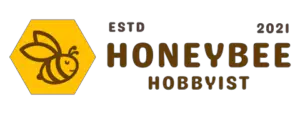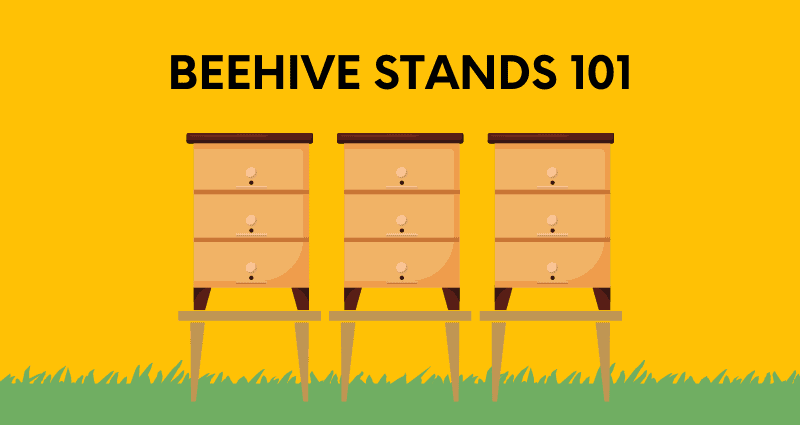Beehive stands are stable bases for honey bee hives that serve multiple purposes including, but not limited to; protecting the hive from predators, ensuring the hives stay dry, and providing enough ventilation to maintain correct temperatures.
Beehive stands are an essential tool in the habitat you develop for your bees. There are many types of stands, including easy-to-build DIY variations. So in this post, we’re going to run through some of the most popular options, materials, and beehive stand placement tips.
Why Use Beehive Stands?
- Extra space underneath hive boxes.
- Better ventilation, humidity, and temperature control.
- Prevents hive box wear and tare.
- Makes relocation of your hives much easier.
- Less bending helps prevent knee, back, and neck injury or fatigue.
- All DIY beehive stands are fast and straightforward to build for beginners.
- Extra height prevents fallen hive beetles and mites from returning to the colony.
- Protects the hive from common apiary attackers like worms, ants, rats, lizards, skunks bears, and bee-eating birds.
- Vegetation will not block the bees from entering the hive.
And finally, a less common, but still important reason for using beehive stands.
Considerations When Buying or Building A Beehive Stand
How high should my hive stand be?
Bee colonies instinctively look for height when selecting a hive location. Your stand height should both accommodate their needs, as well as your needs when tending to the hive.
A typical hive height should be 18 inches off the ground. This should prevent your back from aching if you’re of average height. NOTE: Adjustable height hive stands are available online, and DIY options can be built to your specifications.
What dimensions should I consider for my hive stand?
The dimensions of your hive stand will depend upon the type of hives you use. Whether the popular Langstroth, Warre, top bar, or horizontal hive, be sure to measure the bottom board before building or buying a hive stand.
What materials should be used for hive stands?
From wood, cinderblock legs, metal, and even plastic beehive stands, there are many materials you can consider. We recommend focusing on the weight and durability of your stands so they are easy to work with and will last as long as possible.
Hive Stand Variations
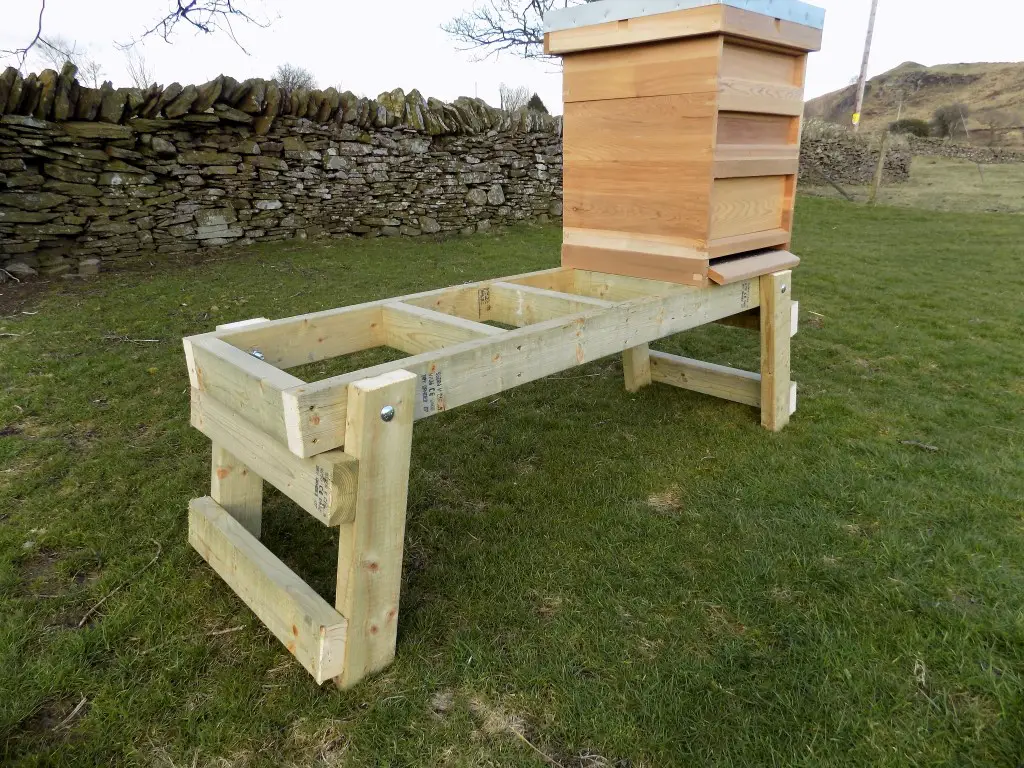
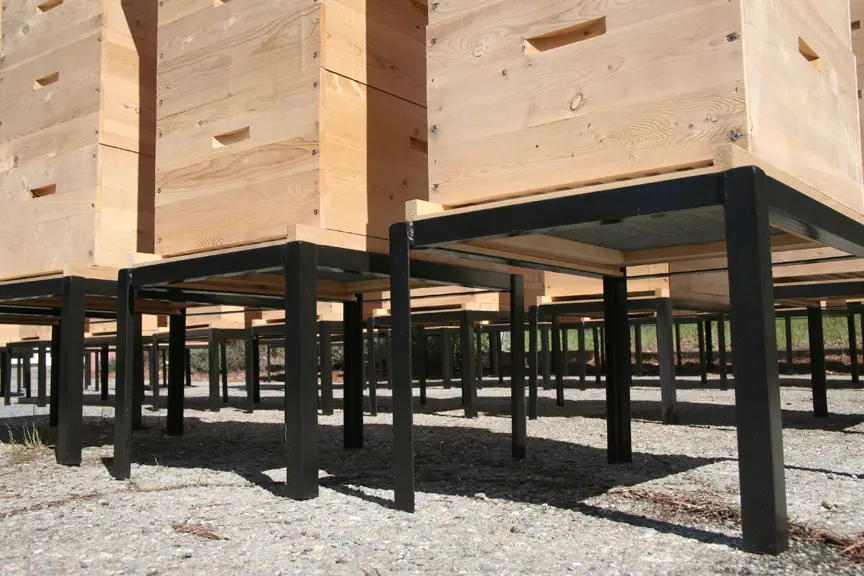
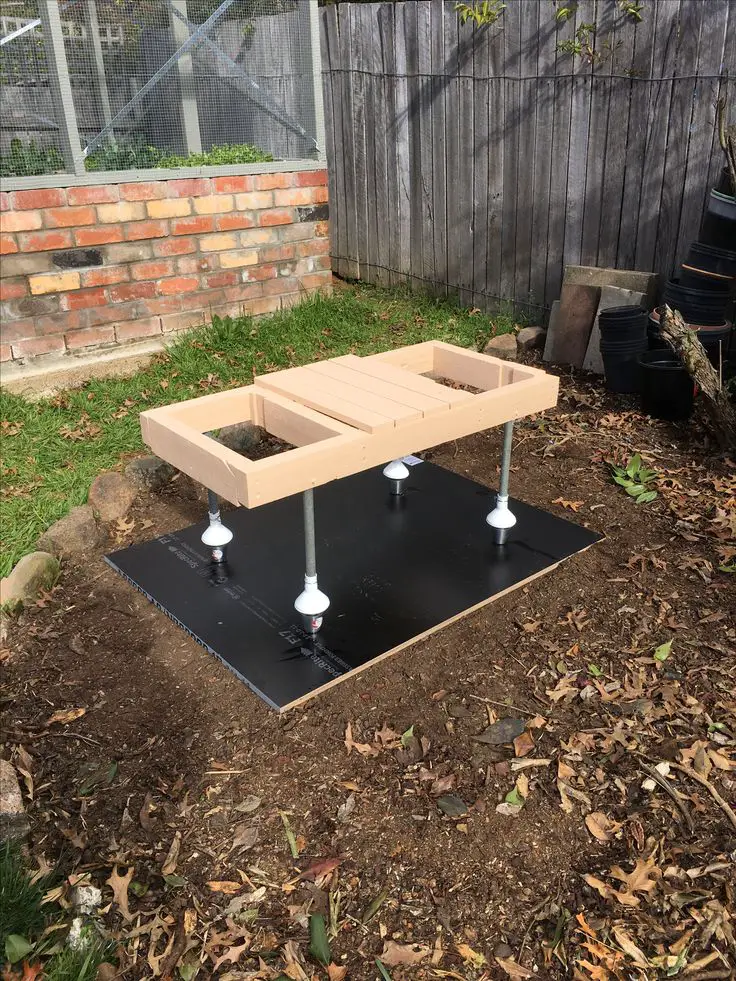

Cinder Block Beehive Stand – DIY
Cinder blocks combined with wood beams, or two-by-four’s, are another affordable and easy to construct DIY beehive stand option.
By placing cinder blocks on either end, then running wood beams through the cinder block’s holes, you can place hive stands down in minutes without the need for power tools or hardware.
Plus, they’re customizable, allowing you to increase the height of the hive stand by placing additional cinder blocks underneath as legs
Materials to Assemble
- 8 concrete cinder blocks 8in x 8in x 16ft
- Wood posts 4in x 4in x 5ft
Step-by-Step Construction Process
- Choose a firm, stable, area to place your cinder blocks.
- Place two cinder blocks lengthwise across from the other two.
- Insert each wood post through the cinder block holes
- Adjust the cinder blocks and posts to level out the structure.
- Carefully place your hive boxes on top the wood posts.
That’s it! No drill, nails, saw, screws, etc…
When sized right, it should fit two standard hives to avoid overcrowding and stability.
Pallet Beehive Stand – DIY
Give those random pallets you have laying around a new life as beehive stands.
They provide a flat surface for hive placement and are a cheap alternative to metal hive stands. Plus, they may hold multiple hives on a single pallet.
What’s more, is that you can lay multiple on top of the others to raise the height of the hive.
NOTE: This is a short-term DIY pallet option though. Pallet stands have significant ground contact, making them susceptible to water and pest damage leading to wood rot.
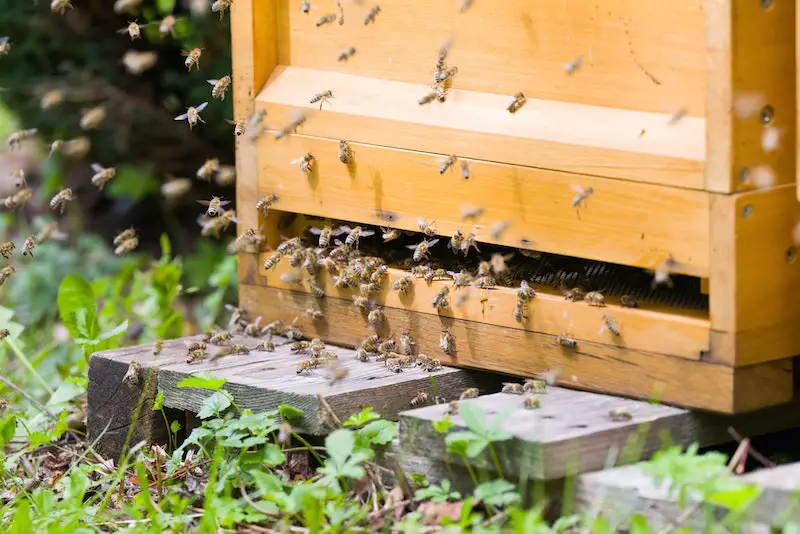
Wood DIY Beehive Stand
This wouldn’t be our first choice in beehive stands, as the labor needed to craft them is out of reach. But, if you have some know-how, throwing together a wooden beehive stand may save you some money in the long run.
Plus, you’ll be able to build to the exact specifications you need for your beehive.
Metal DIY Beehive Stand
Metal hive stands are another option available, but we typically stay away from them for similar reasons as the Wood DIY Beehive Stand above.
Working with metal isn’t our forte and the added time and costs aren’t ideal.
But, of course, if you have a knack for metalwork and know how to throw together something simple…more power to you!
Best Pre-Built Beehive Stands
We’ve covered the DIY options that many beginner beekeepers consider, but let’s also discuss pre-built options you can easily order from Amazon or your favorite beekeeping supplies company.
The one we absolutely love right now is the VIVO Black Plastic Beehive Stand.
Most beekeepers use Langstroth hives, so the 18.8″ x 24.8″ 12.4″ will easily fit a standard 10 frame Langstroth. It’s such an easy-to-use hive stand model that few other options available on the market tend to compete.
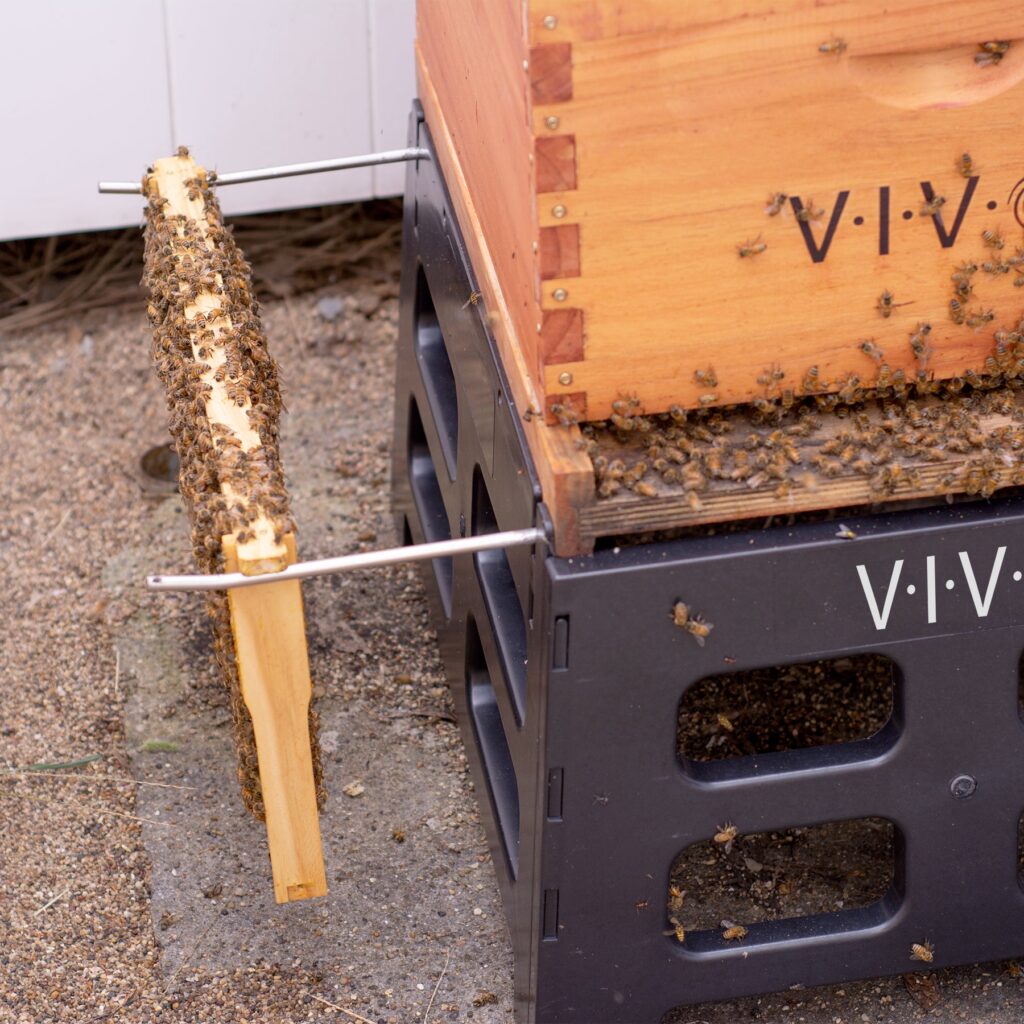
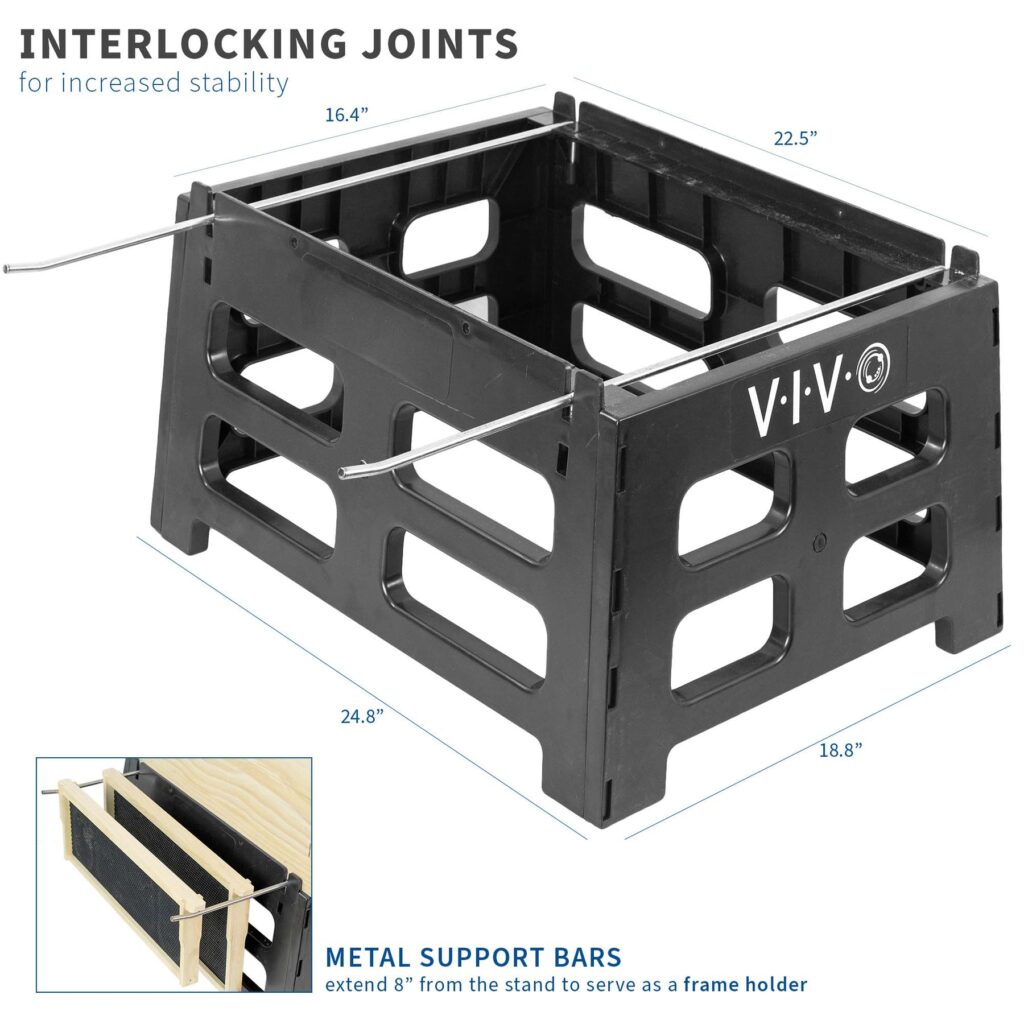
One alternative option might be worth considering though.
Adjustable height beehive stands can come in handy when you’re looking to raise the hive off the ground more than a fixed stand might allow. If you’re looking for such versatility, then the VEVOR Adjustable Hive Stand is an inexpensive option to consider.
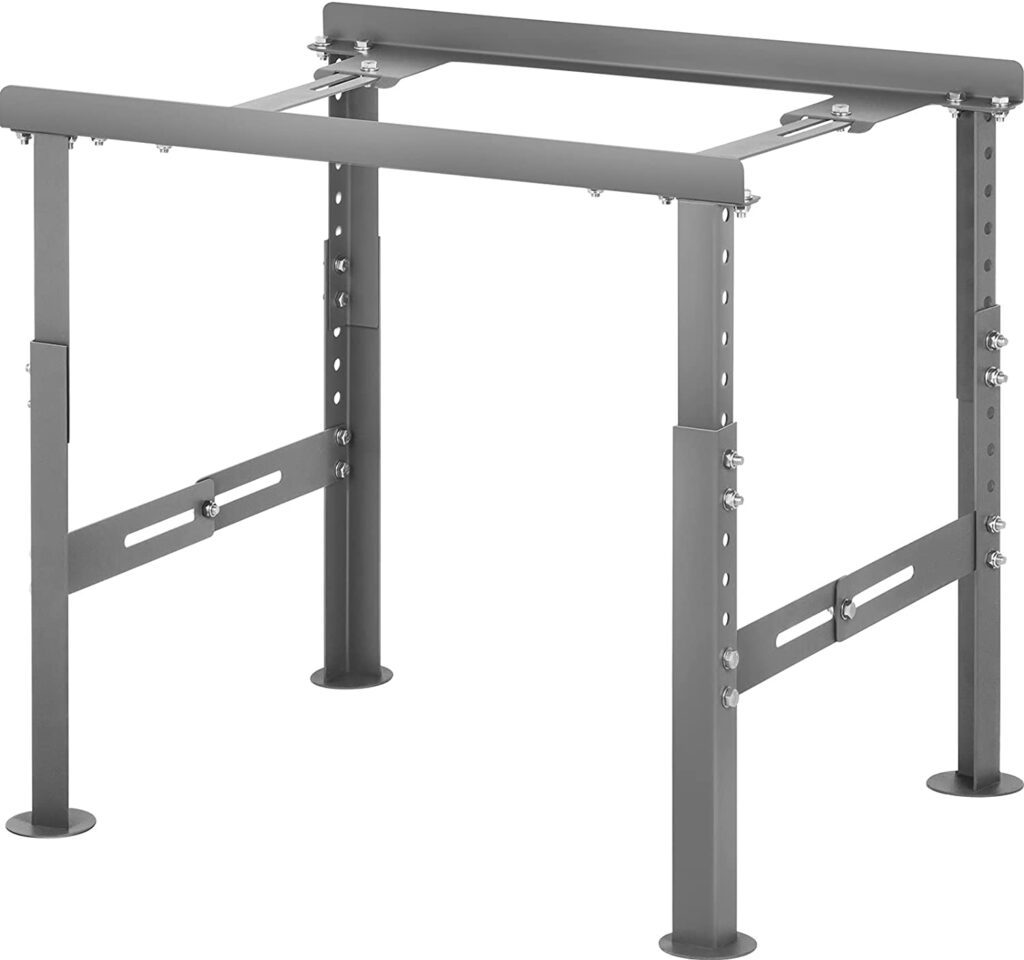
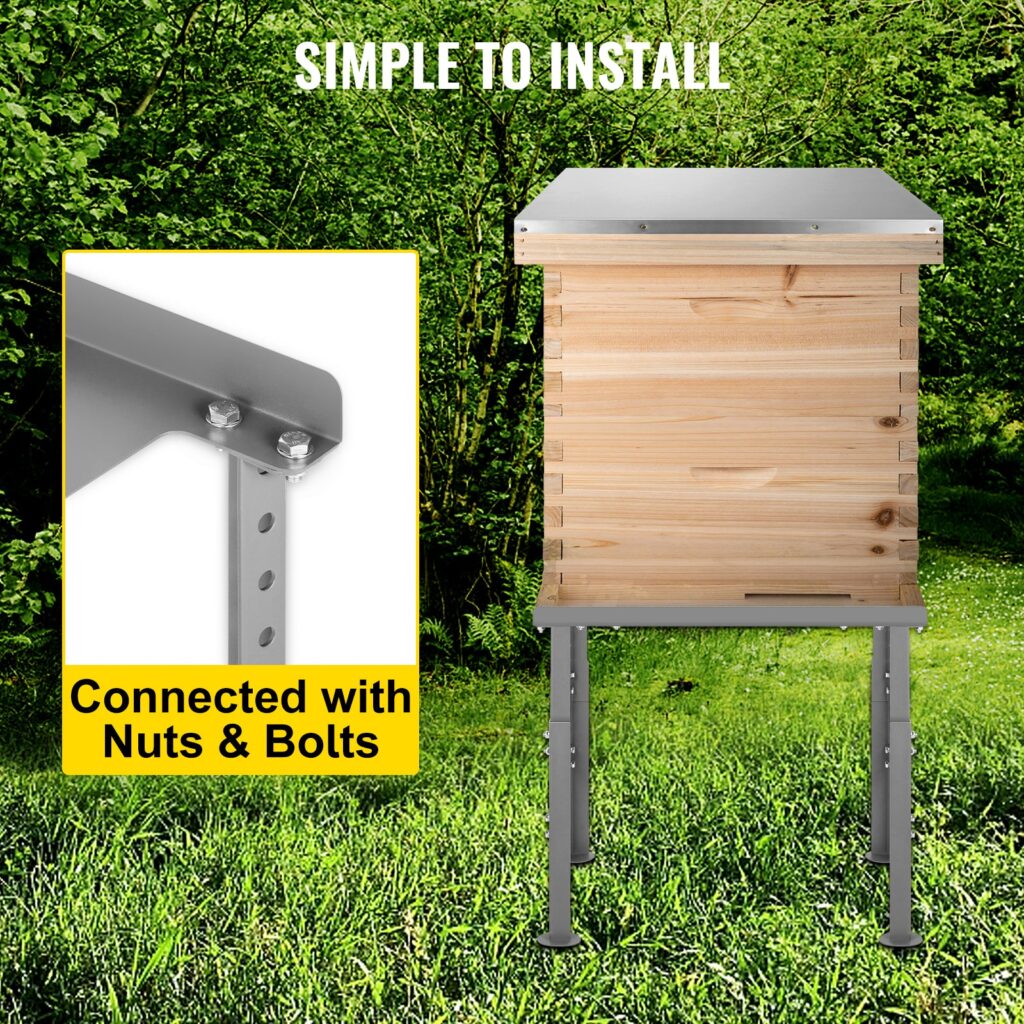
Choosing A Hive Site
- Consider a level and smooth ground to stabilize the hives; avoid hills and areas that funnel wind through them
- Keep off sinking soil or swampy areas
- Keep them far enough away from tree limbs. Predators and other animals may be capable to climb the limbs to the bee boxes
- Ensure there is enough space to allow for additional beehives to be added.
- Lean towards areas with little human traffic.
- Utilize sand, gravel, or concrete slabs to stabilize the stands and prevent undergrowth.
